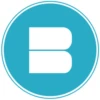Self-publishing has revolutionized the way authors bring their work to the world. With the rise of digital platforms and print-on-demand services, aspiring writers now have unprecedented access to publish their books independently. However, navigating the self-publishing process can be daunting without the right guidance. In this comprehensive guide, we’ll walk you through each step of the self-publishing journey, from preparing your manuscript to building your author brand and beyond.
Introduction to Self-Publishing
What is self-publishing?
Self-publishing refers to the process of publishing a book without the involvement of traditional publishing houses. Instead of relying on literary agents and publishing contracts, authors have the freedom to oversee every aspect of the publishing process themselves.
Why choose self-publishing?
Self-publishing offers numerous benefits, including greater creative control, higher royalty rates, and faster time to market. Additionally, self-published authors retain the rights to their work and have the flexibility to experiment with pricing and marketing strategies.
Preparing Your Manuscript
Before you can publish your book, it’s essential to ensure that your manuscript is polished and error-free. This involves thorough editing and proofreading to correct any grammatical errors, typos, or inconsistencies.
When preparing your manuscript for submission, attention to detail is crucial. Start by formatting your document according to the publisher’s guidelines, including font size, line spacing, and margins. Ensure consistency in headings, subheadings, and body text. Double-check grammar, spelling, and punctuation meticulously. Organize your content logically, with clear transitions between sections. Consider the readability and flow of your writing, aiming for clarity and coherence. If applicable, include any necessary tables, figures, or illustrations, properly labeled and referenced. Finally, review the submission requirements and follow any additional instructions provided by the publisher. A well-prepared manuscript increases the likelihood of acceptance and publication.
Cover Design and Formatting
Importance of a compelling cover
The importance of a compelling cover cannot be overstated. Whether it’s a book, a report, or a presentation, the book cover is the first thing that grabs attention. A well-designed cover sets the tone, piques curiosity, and entices the audience to delve deeper. It serves as a visual representation of the content within, offering a glimpse into what awaits. A compelling cover communicates professionalism, credibility, and relevance. In a world inundated with information, a standout cover can make all the difference between being noticed or overlooked. It’s the gateway to engagement, making it essential for any piece of content aiming to make an impact.
Formatting for print and digital formats
Formatting for print and digital formats is crucial in self-publishing to ensure your work appears professional and readable across various mediums. For print, consider layout elements such as margins, font size, and line spacing to enhance readability. Additionally, optimizing images and graphics for high-resolution printing is essential. In digital formats, focus on compatibility with e-reader devices and platforms, ensuring proper formatting for different screen sizes and resolutions. Pay attention to font embedding and text reflow capabilities to maintain consistency across devices. By meticulously formatting your content for both print and digital mediums, you’ll reach a wider audience and provide a seamless reading experience.
Choosing the Right Publishing Platform
Choosing the right publishing platform is crucial for self-publishing success. Evaluate platforms based on their reach, pricing, and features. Popular options like Amazon Kindle Direct Publishing (KDP) offer vast audiences but might lack certain customization options. Others like BlueRoseOne publiser provide wider distribution with budget friendly costs. Consider your target audience, genre, and goals when selecting. Research each platform’s royalties, ease of use, and promotional tools. Remember, flexibility is key; some authors find success by utilizing multiple platforms simultaneously. Ultimately, prioritize a platform that aligns with your needs and maximizes your book’s visibility and profitability... Continue reading

